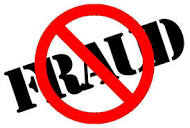 American businesses will spend over $43 billion on online banner and display ads this year, and yet nearly half of all the ad clicks will be fraudulent or fake. They will be performed by bots, which are automated computer programs that browse the web masquerading as humans, for the purpose of committing click fraud.
American businesses will spend over $43 billion on online banner and display ads this year, and yet nearly half of all the ad clicks will be fraudulent or fake. They will be performed by bots, which are automated computer programs that browse the web masquerading as humans, for the purpose of committing click fraud.
Click fraud is one of the biggest challenges facing the digital advertising industry today. Millions of online advertising dollars go to waste due to bots, click fraud, and out-of-sight placements. And click fraud is becoming increasingly sophisticated.
Bots can imitate the behavior of consumers, by watching a video or making an online purchase. Videos cost more to create, so CPMs are higher, making them a prime target for fraudsters. According to the Association of National Advertisers (ANA), bots account for 23% of video ad views.
As an industry, digital advertisers are worried about click fraud - and they are right to be, but sometimes people assume something is click fraud when it’s not.
Read on to find out some home truths about click fraud, and how to protect your brand:
Expectation: Invalid Clicks are Always down to Click Fraud
Many online advertiser are put off by CPC advertising, as they assume that all of their non-converting clicks are caused by click fraud.
Reality: We know that click fraud is malicious, but invalid clicks, (which are often mistaken for click fraud), can also be due to non-performing traffic sources, or human error.
Advertisers are not charged for clicks that are deemed invalid, or not motivated by genuine user interest, such as the second click of a double-click.
While it’s not always possible to control the behavior of your users and prevent invalid clicks, you can be proactive about monitoring your traffic, and take steps to ensure that your site provides a helpful and safe environment for users and advertisers.
Expectation: Bots Can’t Attack you using your own Servers
Reality: Bots can use your own system against you, so take extra precaution! Your biggest target is servers that store valuable information, such as your email server. Oftentimes, once an email server is set up, it is rarely looked at unless there’s an issue. So they’re perfect targets for hackers.
While you can't completely stop hackers from messing with your internal systems, you can take preventative measures. The best thing to do is keep your software up-to-date, and your server locked down when not in use.


